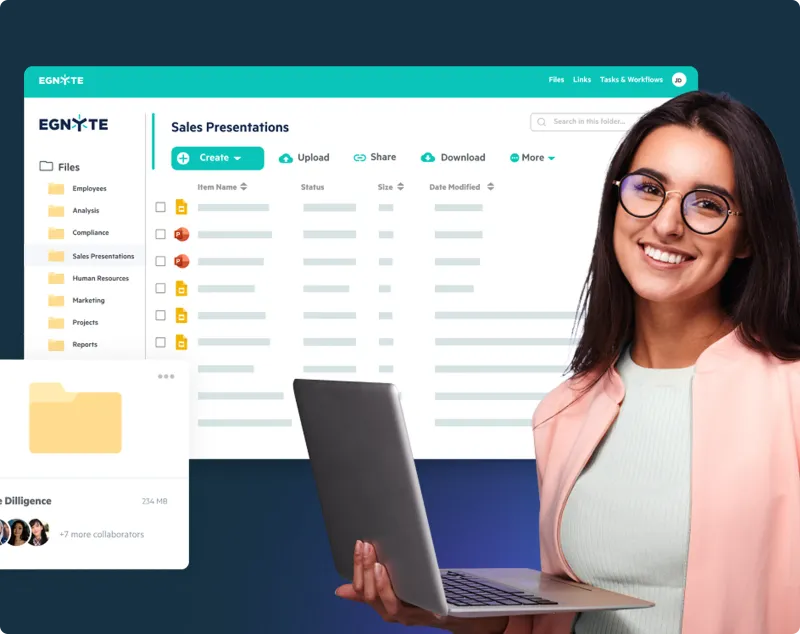Introducing Forma's Suite of Sustainability Tools for Architectural Design
Summary: This article introduces Autodesk Forma's suit of sustainability tools, emphasizing their role in early integration of sustainability measures into architectural design workflows, empowering architects to make informed decisions regarding solar access, wind comfort, embodied carbon, and other factors during the early design stages.
It’s 2024, and the larger AECO industry has never been more concerned about the environmental impacts of the built environments we design and build. With more and more organizations renewing their interest in low-impact + high-performance design, coupled with the introduction of stringent regulations to cap carbon emissions in some regions of the world, the need for integrating sustainability measures as early as possible in design workflows is at an all-time high.

The graph above, adapted from the Infrastructure Carbon Review, 2013, succinctly conveys a simple yet largely unacknowledged idea: design decisions with the most potential to cut carbon emissions are made in the earliest phases of a project. Whereas, conventional design workflows suffer from the rut of siloed decision-making, where the impacts, performance, and sustainability of decisions begin to be addressed much later than needed. Buildings that are a product of such decision-making involve uninformed, less-than-robust quick-fixes for problems that were not addressed in the early phases.
Surprisingly, this is the truth with a significant number of projects undertaken by Architecture practices. This may be attributed to a few factors: consultants stepping in much later in a project, after many substantial decisions have already been made; or the non-availability of resources to address impacts, performance, and sustainability holistically right from when a project commences.
Autodesk Forma, the software giant’s newest SaaS product for exclusive use by Architects and Designers in the early design phases, solves this very particular problem. Read on to find out how! Autodesk Forma is available in Autodesk's AEC Collection software bundle and for standalone subscriptions.
Forma for Sustainable Design
Our first article in the series has elucidated the emerging use of Autodesk Forma in the concept and schematic design phases. We also saw in the second article how the Forma Ecosystem will be crucial to address some bottlenecks in conventional design workflows. But the biggest value Forma intends to create for its users lies with its Sustainability tools, which enable users to analyse and evaluate their design iterations objectively, with respect to some key performance criteria including solar access, daylight potential, wind comfort, microclimate, embodied carbon, and so on.
With its suite of Sustainability tools, Forma provides access to some very sophisticated and insightful analysis to anyone, without having to master specialised software and toolkits for the same. Plus, incorporating such insight as you sketch and iterate during your concept and schematic design phases, especially with all stakeholders on-board, is a very effective way to make responsible decisions at your earliest, thereby preventing major changes downstream.
Following are a few Sustainability tools that Forma currently offers its users, which can help cut-down your environmental impacts right from Day 1!
1) Sun-hours Analysis
Location, orientation, and formal articulation of your design most directly drives the incidence of (or protection from) the sun on your built form. Apart from improving the comfort and well-being of occupants, solar incidence also drives occupant energy use, all of which are of chief importance in decision-making.
Forma enables you to integrate the sun and its impact into your design process with its Sun-hours Analysis workflow.
In essence, the sun-hours analysis function works by measuring the number of sunlight hours at different points on the ground and on the building’s façade, on any given date. Users can define analysis limits or zones of interest on their massing options, and visualise solar incidence on the same. The results are visible on the massing/form, as a gradient of different degrees of sun access. You are also free to use inspection points to see the exact number of sun hours for specific points of interest.
| Fig.2) Sun-hours Analysis on Forma |
The analysis provides users with data-driven insights in real-time to help articulate their building with the sun as a design driver.
2) Solar Energy Analysis
Architects have long been specifying the use of solar photovoltaic panels on their projects for on-site renewable energy production. It’s a tried and tested means to offset operational energy demand in built environments.
But more often than not, it’s been a challenge for Architects to incorporate early evaluation of solar energy potential in buildings, since it may require in-depth technical skills and complex tools to measure their impact. As a consequence, the incidence of solar radiation on your buildings is not adequately evaluated, and thus valuable solar energy potential is lost.
And with Forma, that is to change.
With the in-built Solar Energy Analysis function, Forma assesses the annual solar energy potential on your massing/design iteration, and quantifies the result in kWh/sq.m. (or sq.ft.) It takes into account the influence of the local climate, as well as surrounding context including terrain, vegetation, and buildings, to provide immediate insights into the annular solar energy potential.
| Fig.3) Solar Energy Analysis on Forma |
Testing and optimising designs for solar energy previously required much time and investment, whereas now it takes just a few clicks! With Forma, these analysis results are clearly displayed in the design, and the 3D models show in real time how changes affect the solar energy potential.
3) Daylight Potential Analysis
One of the most relevant design criteria that drives schematic design – from massing and articulation, to internal layouts – is daylight. Bringing in an adequate amount of daylight is crucial to the success of a project of almost any typology/program. Conventionally, studying daylight penetration into your interiors occurs after major design decisions have been made, which hinders changes that may be required to improve daylight performance. This is counterproductive, as the intent of letting in maximum daylight into your space is lost.
Perhaps the only way to rectify the issue is to study daylight availability in your design iterations right from the concept stage. Autodesk Forma equips you to do just that, rapidly so, using the VSC (Vertical Sky Component) method.
Forma’s Daylight Potential study expresses as a percentage score, the measure of how much light reaches the facade from the sky. For different points on a building, the sky component score indicates how much light would shine through a window placed at those points. Analysis results are mapped on the massing/iteration, and are divided into colour bins corresponding to daylight penetration through windows placed therewith.

Powered by Forma’s daylight potential analysis, you can quickly explore a large number of options, and enhance both comfort and environmental outcomes of your projects.
4) Embodied Carbon Analysis
A holistic picture of truly sustainable design is far from complete without a focus on its embodied carbon emissions. In the context of the AEC industry, embodied carbon encompasses all greenhouse gas (GHG) emissions arising from the upfront activities necessary to construct or renovate buildings and infrastructure. Existing solutions to address embodied carbon are often hurdled by a steep learning curve or level of expertise to use specialised software, which are also severed from Architects’ design tools, and thereby, the design process itself.
The Embodied Carbon Analysis tool in Forma enables designers to better understand the carbon impacts from primary material choices and building form during site feasibility and massing studies at the beginning of a project planning process. The tool harnesses an AI-powered workflow based on the Architecture practice EHDD’s C.Scale API enabling Architects to evaluate material suitability and rapidly see the influence of their design on associated emissions.
Decisions about building form, structure, and primary materials have the highest impact on embodied carbon, and are all made during the initial planning phases. And Autodesk Forma lets you assess carbon impacts from Day 1 by putting carbon intelligence into the fingertips of every designer! Users can define site-wide or building specific analytical properties to their design, including building program, structural system, envelope factors including window-to-wall ratios, cladding, etc. and Forma yields near-instant results of the life-cycle embodied carbon number expressed in tCO2e.
Rendering the ability to understand and weigh the trade-offs between structural systems and materials from the very beginning of the design process, Forma empowers Architects to start the conversation about project embodied emissions much early on!
| Fig.4) Embodied Carbon Analysis on Forma |
5) Wind Analysis
Assessing the wind conditions at your site is crucial to prevent your buildings from generating undesirable wind effects, thereby ensuring that outdoor spaces remain comfortable and safe for pedestrians and cyclists. Autodesk Forma streamlines and accelerates this process with its Rapid Wind Analysis, making it quicker and more seamless.
Also powered by machine learning, the rapid wind analysis tool by Forma predicts wind conditions instantaneously, giving users an immediate indication of how the building mass impacts wind conditions on site.
| Fig.5) Rapid Wind Analysis on Forma |
6) Microclimate Analysis
Microclimate plays a big role in crafting outdoor spaces, since unpleasant conditions such as excessive heat or wind discourage people from spending time outdoors. At the same time, cities must now be equipped to face hotter temperatures that, in turn, worsen urban heat islands. It’s vital for architects and urban designers to be able to pinpoint problematic areas and address them at the earliest stage of design.
Autodesk Forma’s microclimate analysis is designed to help users make more informed decisions about thermal comfort, at the early stage, when designing outdoor spaces. It combines the sun, daylight, and wind analyses with local weather conditions to calculate the perceived (feels like) temperature across your site, using the UTCI (Universal Thermal Climate Index) model.
The analysis lets users explore the conditions of their site and specific situations more intuitively. You can configure the analysis to evaluate your site at different times of the day, with different air temperatures and wind situations, and visualise the outdoor comfort conditions. Users can also specify custom comfort ranges, say through various seasons according to their project location, and analyse their site for such cases.

Autodesk Forma’s suite of Sustainability tools are robust enough to equip beginners and specialists alike to assess, evaluate, and analyse the environmental conditions, comfort implications, and embodied carbon impacts of their projects to objectively improve the design iteration process. With an intention to solve the most pressing design problems as early as possible, Forma is all set to drastically change our workflows for the better!
Recent Articles
Learn about the latest architecture software, engineering automation tools, & construction technologies

Blueprints AI: Generating Construction Documentation with Artificial Intelligence
Discover how Blueprints AI is speeding up construction documentation in our latest aec+tech interview, where CEO AL Dram shows how teams can turn prompts, sketches, and existing files into permit-ready drawing sets and then iterate on city comments fast using AI-driven revisions – and what that means for firms drowning in drafting.

Pioneering Technical Report Management (TRM™) for AEC Firms: A Quire Deep Dive
Learn how Quire founder Kelly Stratton is reinventing technical reporting in our latest aec+tech interview, where its purpose-built TRM™ platform, WordBank-powered standardization, AI-driven Smart Search, quality control, and the Lazarus knowledge engine come together to help AEC, environmental, and CRE teams cut reporting time and errors while unlocking their institutional expertise.

Moving to the Cloud: Egnyte’s Staged Approach for Architecture Firms
As projects grow, AEC firms are rethinking data management and collaboration. This article outlines Egnyte’s six-stage Architecture Cloud Journey—a practical roadmap for moving from on-premise systems to secure, collaborative cloud environments. From assessment to continuous improvement, it shows how to streamline workflows, strengthen security, and future-proof with AI-ready infrastructure.

SaaS Founders: Are You Timing Your GTM Right?
This article was written by Frank Schuyer, who brings firsthand experience as a founder in the software and SaaS world. In this piece, he explores how founders can unlock faster growth and stronger market traction by integrating go-to-market strategy (GTM) from the very beginning of product development—rather than treating it as an afterthought.